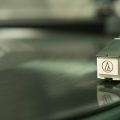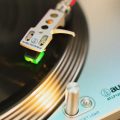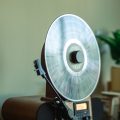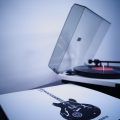Are you looking to invest in a new turntable but don’t know where to turn? Perhaps you have already heard of Rega and its esteemed work as a manufacturer of high-end audio gear. Perhaps you have even got their famed RP3 turntable and are debating whether to upgrade to the Rega RP6 or not. Maybe you haven’t even heard of Rega at all.
Whatever your situation, join us as we explore the ins and outs of the Rega RP6 and how it compares to its closely-related brethren.
Table of Contents
- Overview
- Packaging
- First Impressions of the Rega RP6
- Setup
- Sound
- Conclusions
- Final Tones
- FAQs Rega RP6
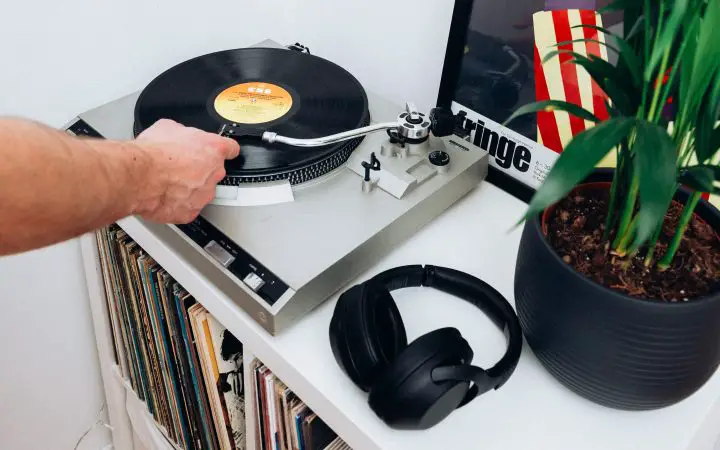
Overview
What better way to pander to the short attention span of the millennial audience than to helpfully summarize the next however many thousand words about this Rega turntable into one neat package of pros and cons?
Pros
First, let’s see what makes this stand out among other Rega turntables as well as what traits it carries forth and communicates about the brand.
- The sound is overall well-defined and dynamic, delivering a full and rich frequency spectrum thanks to the exact cartridge choice.
- Despite how strong this performance and how professional the overall sound is, this is a very inviting piece of kit, welcoming even the most novice record collector looking to start a new hobby.
- The build quality is superior to many other competitors, making many look like shambles, in fact. The design is sleek, and one feel will help naysayers gauge that this is a piece of equipment that has clearly been carefully and considerately designed, as evinced by the machined aluminium sub-platter.
- The sound organization is a breeze thanks to the outboard TT PSU power supply, meaning that there will be no problems with speed stability in the main bearing.
- As already alluded to, the cartridge and turntable themselves are perfectly matched to one another, with a commendable built-in phono stage to boot, making this a truly approachable piece of equipment for a novice or anyone else who does not want to purchase a separate preamp.
Cons
Now, we must look at the inverse, though there really is not very much to speak of apart from
- The fact that this model looks almost exactly like older models might be a turn-off for some, especially those who already own some of these older models of Rega turntable.
Packaging
As you might already have expected from Rega, this is one of those direct drive turntables that are extremely well-packaged for shipment – those looking to learn how to ship vinyl records should take a leaf out of their book. There is a clear intention toward minimalism even in the packaging. The packaging is thus simple, not only to keep costs low but also likely so as not to clutter the space more than necessary, to protect the most vital parts of the turntable from certain doom.
In the box, you will only find:
- the turntable itself
- the platter
- a felt platter mat
- the dust cover
- some documentation, instructions, and manual
- cardboard cartridge alignment protractor
In a separate box, you will find:
- the TT power supply unit
- a connection cable
- the power supply
If you ordered the turntable with the exact one of Rega’s cartridges fitted already, you will find it complete with a protective stylus cover mounted to the end of the RB303 tonearm. Rega refers to this as the only cartridge for the job – the Grado cartridge, if you will.
Before you go forth and get all excited about this new turntable in your home, you should first examine all of the packaging carefully and thoroughly. As with many turntables these days, the Rega RP6 will require some assembly on your part before it is ready to go.
This will include fitting the stainless steel counterweight to the rear of the RB303 tonearm. This counterweight should be located in a slot in the polystyrene, keeping the main sub-platter assembly in place. This is why it is important to examine the packaging thoroughly, for this piece is quite easy to miss.
First Impressions of the Rega RP6
Thankfully, the Rega RP6 comes pre-fitted with a standard belt that is going to be able to get the job done without any questions or hesitations.
There is, however, a white belt upgrade which, seeing as it would mean such a little additional fee, would have been nice to see as a more standard choice and not just some extra. Another gripe for some might be the fact that the RCA cables are also pre-attached and held in place by a retainer beneath the turntable, a pain for those who prefer a certain type of cable or who might, in the future, need to change them.
Despite the fact that the overall design of the turntable remains a little too similar to most turntables in the Rega range, the cables seem to have a new design. The previous models use a thicker and heavier cable with each channel adjoining in the middle. The newer design, on the other hand, appears to use a more flexible cable that is not dissimilar to Rega’s Couple2 with separated channels.
The tonearm is also worthy of note from the start, as you would expect. Though there are scarcely any notable differences between the quality of this tonearm and those that have come before, this is still a very solid and robust item.
One thing to note alongside this is the fact that the anti-skate or bias slider feels a little loose, though this might not be the case for all models. Even still, it is worth noting in case the quality control checks are not quite up to scratch over at Rega HQ.
Setup
In contrast to some other modern turntables which require setting up at home, the setup of this particular turntable could not be much simpler.
Once all the packaging is removed and you have located the turntable on a suitable surface – i.e. one that is stable and ideally flat – all that really remains is to place the platter atop the pre-installed sub-platter. A good spot might be, say, a turntable wall shelf or a sturdy low-resonance hi-fi rack. Place the mat on top of that and locate and connect the power supply to the socket on the rear of the turntable.
Once you have done all of this, you can then connect the leads of the tonearm to your amplifier. Important to note here is the absence of a separate ground lead, something that would otherwise be unnecessary on a Rega tonearm as the ground is permanently connected to the right-channel negative.
If, though, you didn’t order the RP6 with the same cartridge which we have been discussing until this point, now would be the time to set up your cartridge, after which you can proceed to install the tonearm.
This will involve installing the counterweight onto the shaft at the very rear of the arm and then adjusting it to your needs, ensuring that the stylus cover is removed, and revealing the bare stylus tip. The arm should be able to float horizontally in the air or in such a way that the tip of the stylus floats roughly 1mm above the surface of a record.
Once you have completed this, you can go on to adjust the tracking force by rotating the dial on the side of the arm, then setting your anti-skate by pushing the bias slider to equal the tracking force. In this case, it should be set to a value of 1.75g.
Sound
Since this is a Rega turntable, you can be sure that, even if the aesthetic qualities of the turntable are not to your liking, the sound itself certainly will.
There is a very real tendency in audiophilia today to manufacture turntables that offer a more digital sound – i.e. one that offers a more cold, though wide, frequency spectrum. With the Rega RP6, though, there can be no doubt that you are listening to vinyl. The sound response is engaging, both fun and lively, while also doing justice to the source material of whatever you are listening to.
Surface noise – the part of audiophilia concerned with the noise floor and low-frequency rumble – is impressively low on this turntable. It certainly is not silent, but in this price range, this is about as silent as you are going to get, especially compared to the similarly priced Clearaudio Concept. Similarly, sibilance – otherwise known as the high-frequency splattering that results from the misalignment of the spiraling record groove – is kept to a minimum here.
Interestingly enough, this turntable copes exceedingly well with records that have seen a lot of use. Worn or noisy records, though still marred (or blessed as the case may be) by background crackle, this background crackle occupies a firmer place in the music. In fact, by some sensory miracle, it almost becomes more like a part of the music itself.
Conclusions
So, overall, we can conclude that the Rega RP6 is an exemplary turntable. One of its greatest facets is just how musically involving it can be, which, when combined with just how easy it is to set up and how stylish and current the aesthetics are, make this a real keeper.
If you are an audiophile who wants to hear the difference in their records but likewise just want to listen to your records without too much fuss and too many extra features, then this turntable will be a dream for you. Similarly, though, this will also suit the audiophile who likes to endlessly tweak their sound, for there are plenty of opportunities to upgrade the heck out of this thing.
The burning question, we suppose, is whether or not this is a worthy step up from the Rega RP3. Though these two turntables may look incredibly similar minus, their tonal character is actually quite different, especially if you are one more inclined toward noting these kinds of minute differences. Sure, they are both loaded up with that characteristic richness so well done by Rega, but they are also their own beasts and should be approached as such.
Final Tones
So, there you have it! Hopefully, you are feeling better informed and able to make a decision on where precisely you stand for making an investment in this leading turntable.
FAQs Rega RP6
What colors does the Rega RP6 come in?
As far as can be gleaned from the official Rega website, the Rega Planar 6 is only really available in black or white, though there have been several limited edition runs of alternate designs, most notably one manufactured with the Union Jack flag imprinted onto the base. Such tasteless scud is only available via second-hand sellers and the like now. There is, however, the option to customize the belt of the turntable from black to white, though this will come at an extra cost. This extra cost is so marginal in comparison to the rather extortionate price tag of the turntable that it almost seems like some sort of sick joke on their part, one whose meaning is still lost on the general populus.
How much does the Rega RP6 weigh?
Though the precise weight might vary depending on what additional parts you might add to the overall turntable, the weight out of the factory is around 16 Ibs. This is, however, with the cartridge that Rega fit the turntable with as standard. Sure, a cartridge is tiny and will likely weight next to nothing, but it won’t weigh completely nothing. Thus, it is important to take this into account.
Is Rega P6 better than P3?
This remains to be seen; the answer will depend on your preferences. For the most part (and especially in terms of the aesthetic properties of each), they are incredibly similar. Sure, the P6 has a more glossy sheen about it compared to the P3, but in terms of the sound, the differences are going to be largely for the audiophiles. Who else, after all, would spend so much money on a turntable, needing still to purchase a dedicated amplifier and a set of speakers capable of doing such a high-end turntable any justice?



